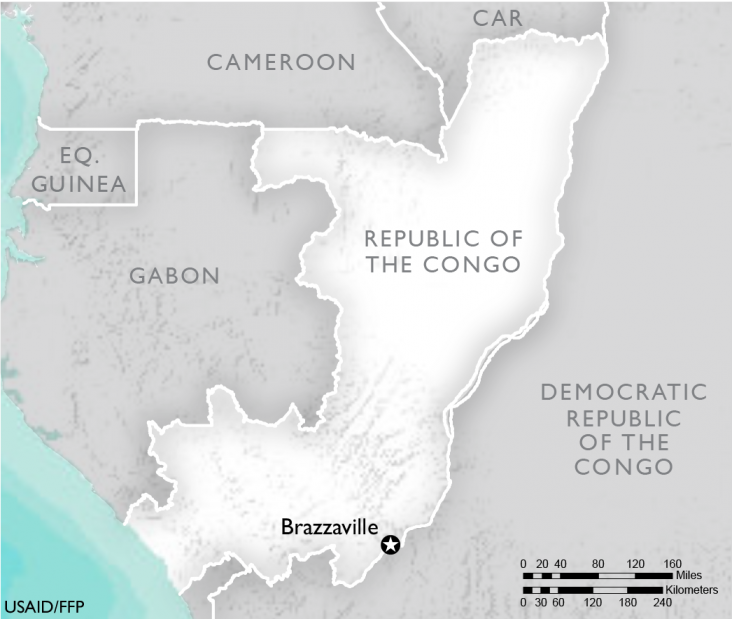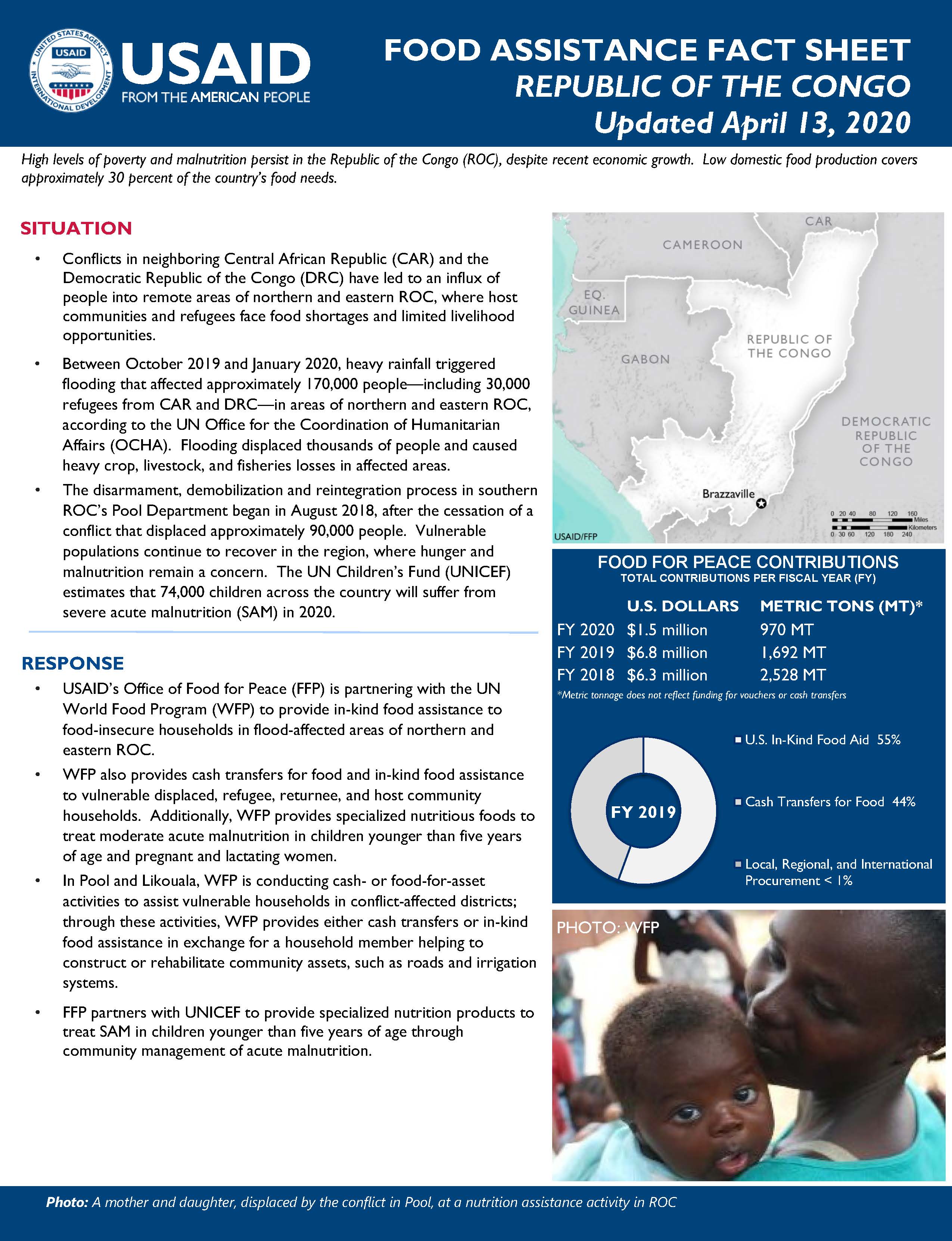Home » What We Do » Agriculture and Food Security » Food Assistance » Where We Work » Food Assistance Fact Sheet - Republic of the Congo
- What We Do
- Agriculture and Food Security
- Democracy, Human Rights and Governance
- Economic Growth and Trade
- Education
- Environment and Global Climate Change
- Gender Equality and Women's Empowerment
- Global Health
- Humanitarian Assistance
- Transformation at USAID
- Water and Sanitation
- Working in Crises and Conflict
- U.S. Global Development Lab
Speeches Shim

Map of Republic of the Congo
April 13, 2020
High levels of poverty and malnutrition persist in the Republic of the Congo (ROC), despite recent economic growth. Low domestic food production covers approximately 30 percent of the country’s food needs.
Situation
- Conflicts in neighboring Central African Republic (CAR) and the Democratic Republic of the Congo (DRC) have led to an influx of people into remote areas of northern and eastern ROC, where host communities and refugees face food shortages and limited livelihood opportunities.
- Between October 2019 and January 2020, heavy rainfall triggered flooding that affected approximately 170,000 people—including 30,000 refugees from CAR and DRC—in areas of northern and eastern ROC, according to the UN Office for the Coordination of Humanitarian Affairs (OCHA). Flooding displaced thousands of people and caused heavy crop, livestock, and fisheries losses in affected areas.
- The disarmament, demobilization and reintegration process in southern ROC’s Pool Department began in August 2018, after the cessation of a conflict that displaced approximately 90,000 people. Vulnerable populations continue to recover in the region, where hunger and malnutrition remain a concern. The UN Children’s Fund (UNICEF) estimates that 74,000 children across the country will suffer from severe acute malnutrition (SAM) in 2020.
Food Assistance Fact Sheet - Republic of the Congo ![]() (pdf - 248k)
(pdf - 248k)
Response
- USAID’s Office of Food for Peace (FFP) is partnering with the UN World Food Program (WFP) to provide in-kind food assistance to food-insecure households in flood-affected areas of northern and eastern ROC.
- WFP also provides cash transfers for food and in-kind food assistance to vulnerable displaced, refugee, returnee, and host community households. Additionally, WFP provides specialized nutritious foods to treat moderate acute malnutrition in children younger than five years of age and pregnant and lactating women.
- In Pool and Likouala, WFP is conducting cash- or food-for-asset activities to assist vulnerable households in conflict-affected districts; through these activities, WFP provides either cash transfers or in-kind food assistance in exchange for a household member helping to construct or rehabilitate community assets, such as roads and irrigation systems.
- FFP partners with UNICEF to provide specialized nutrition products to treat SAM in children younger than five years of age through community management of acute malnutrition.
Food for Peace Contributions
Total Contributions:
| U.S. Dollars | Metric Tons* | |
|---|---|---|
| Fiscal Year 2020 | $1.5 million | 970 MT |
| Fiscal Year 2019 | $6.8 million | 1,692 MT |
| Fiscal Year 2018 | $6.3 million | 2,528 MT |
*Metric tonnage does not reflect funding for vouchers or cash transfers.


Comment
Make a general inquiry or suggest an improvement.